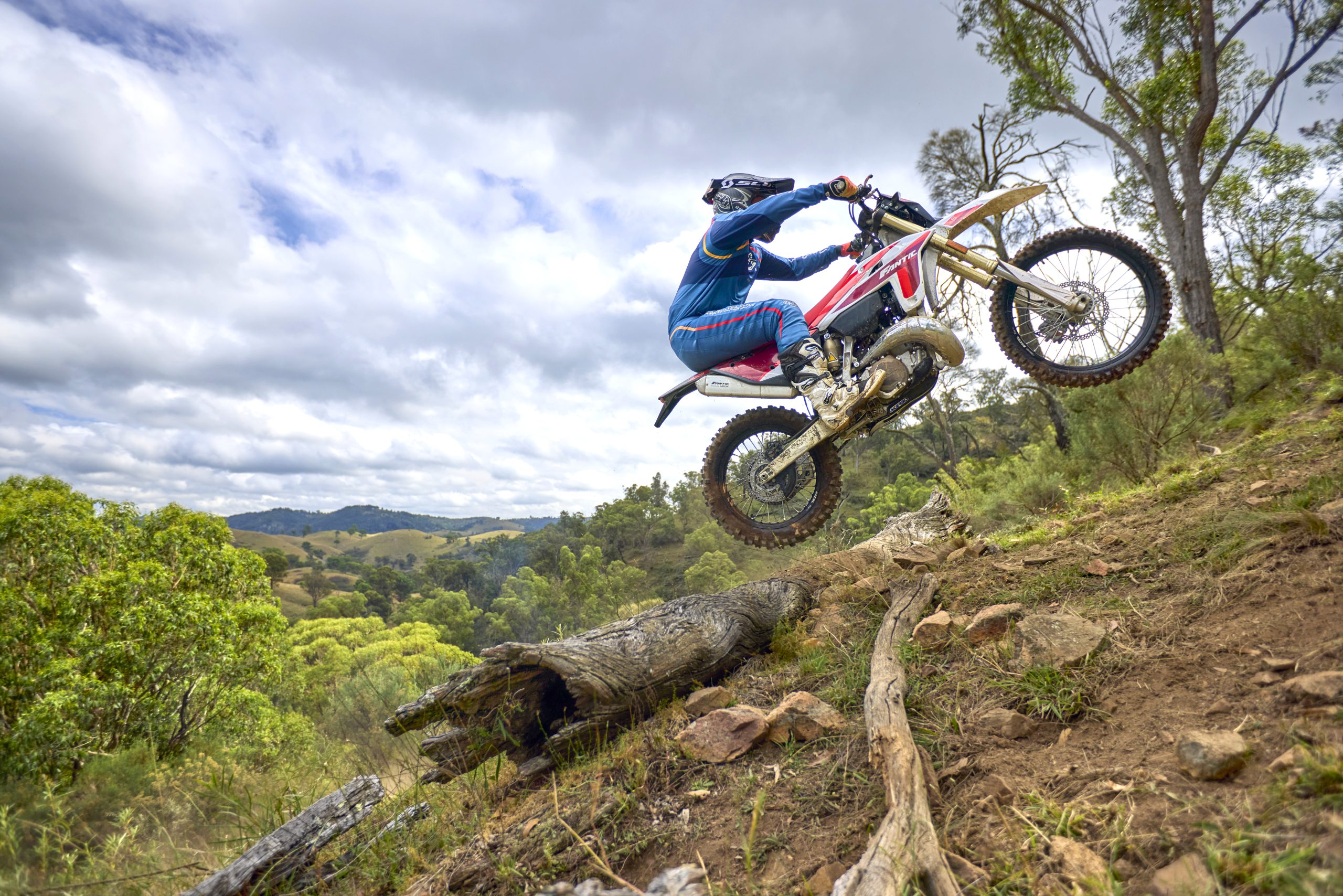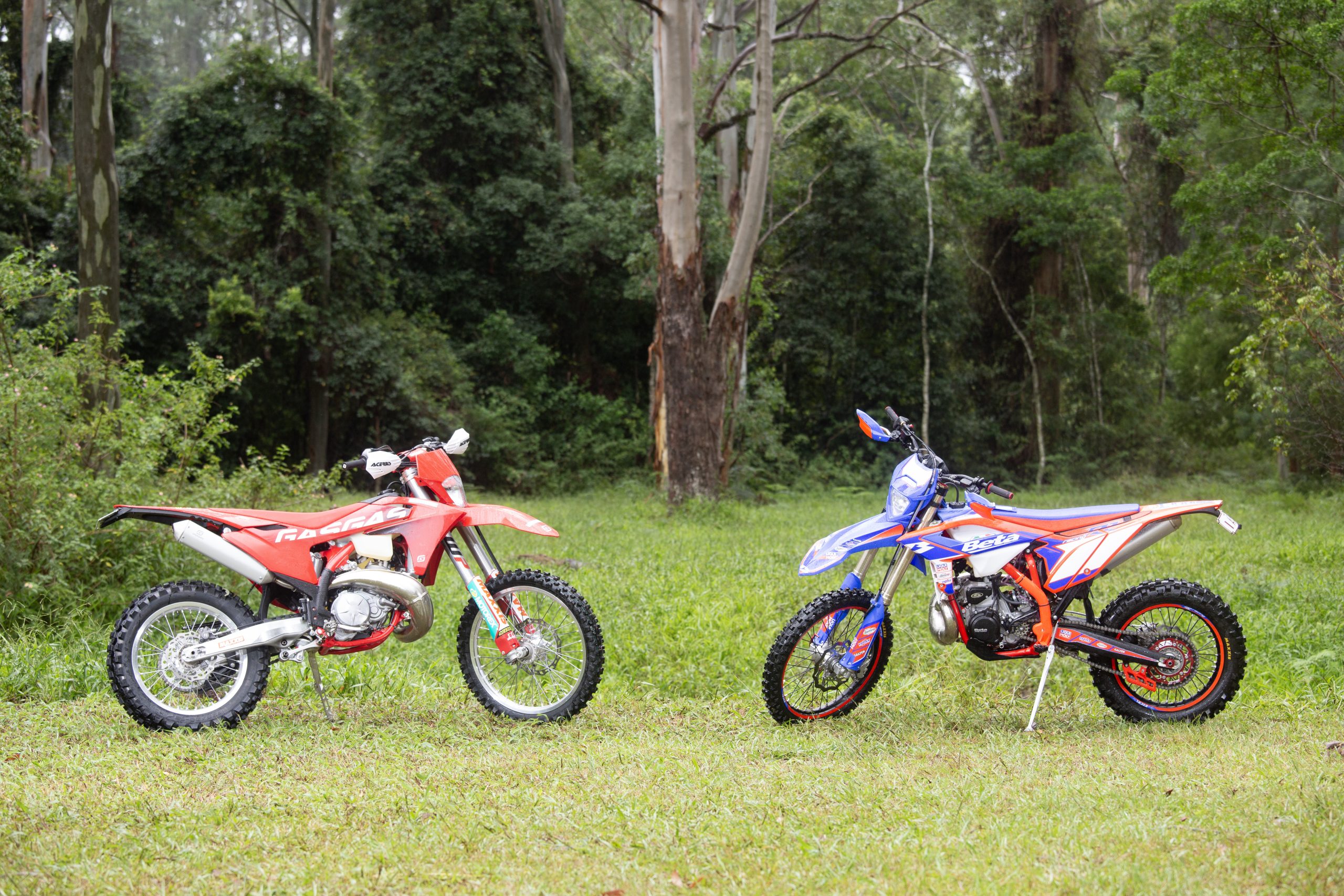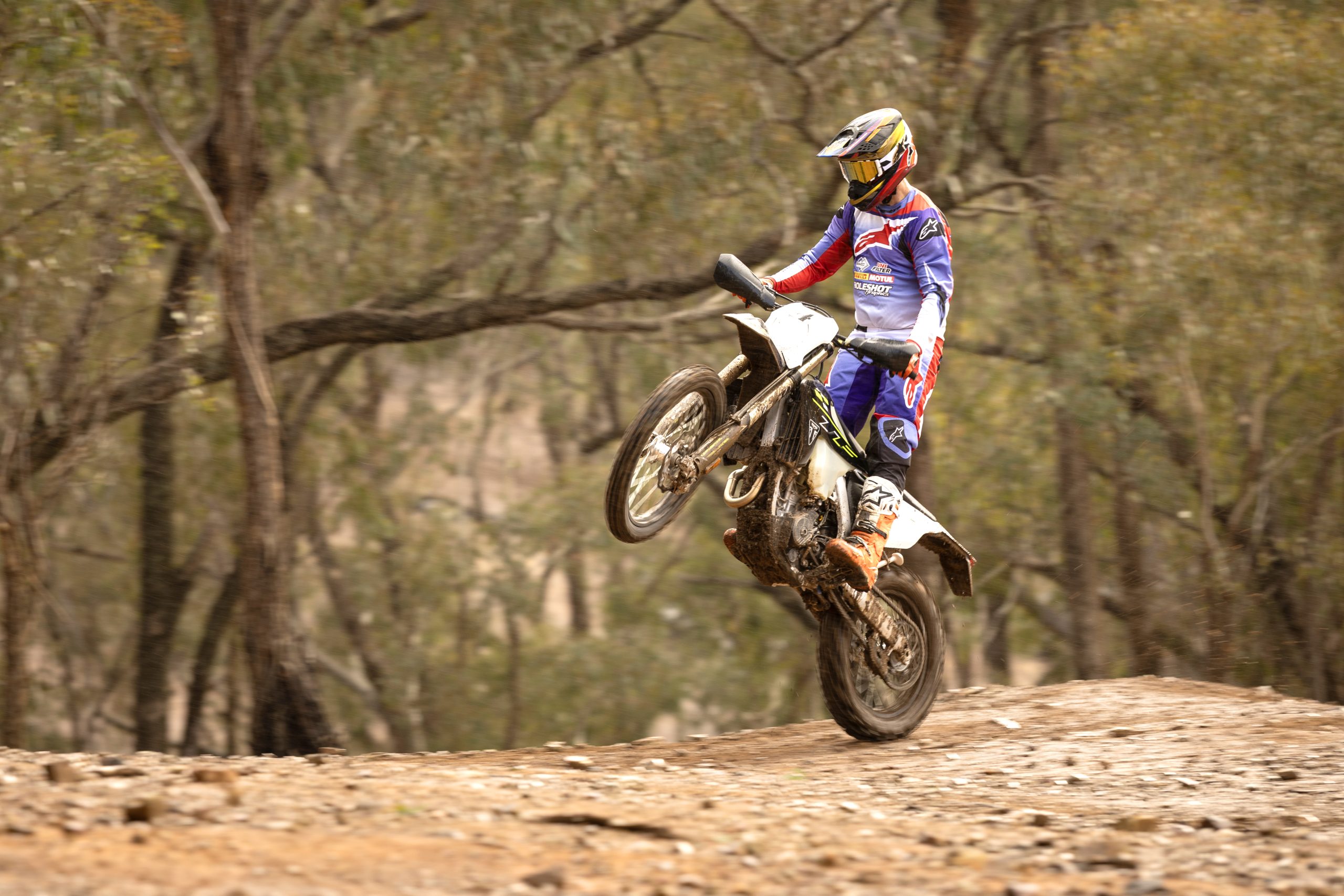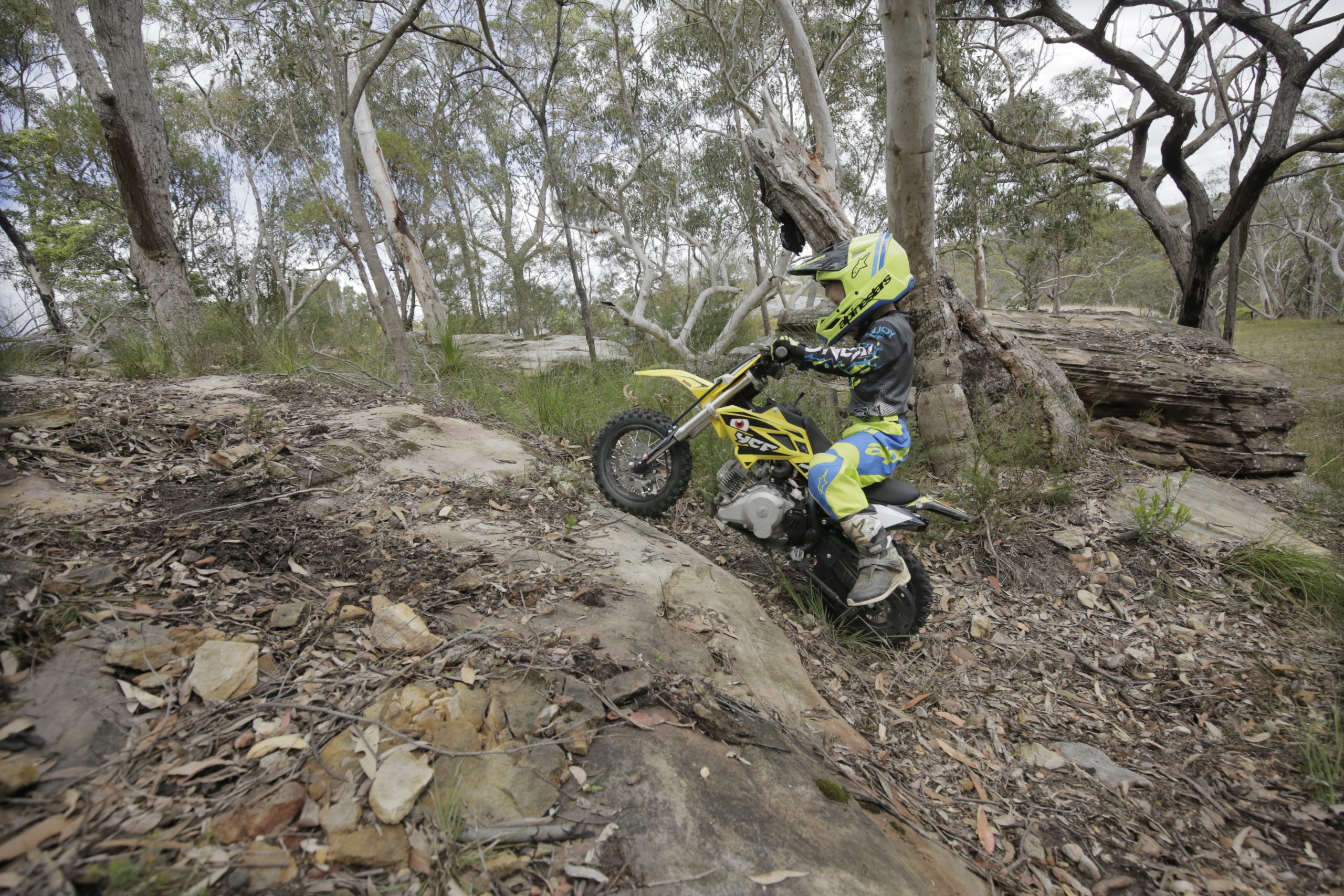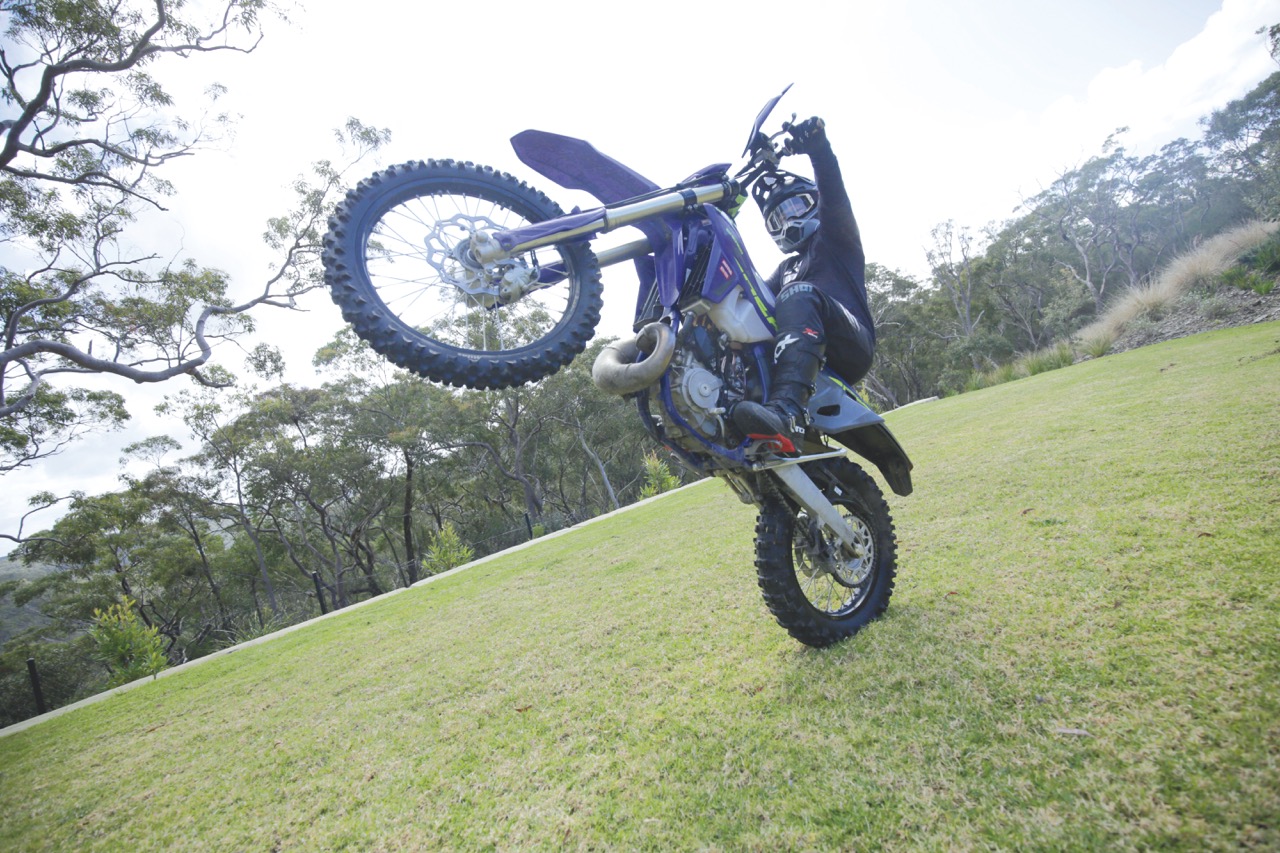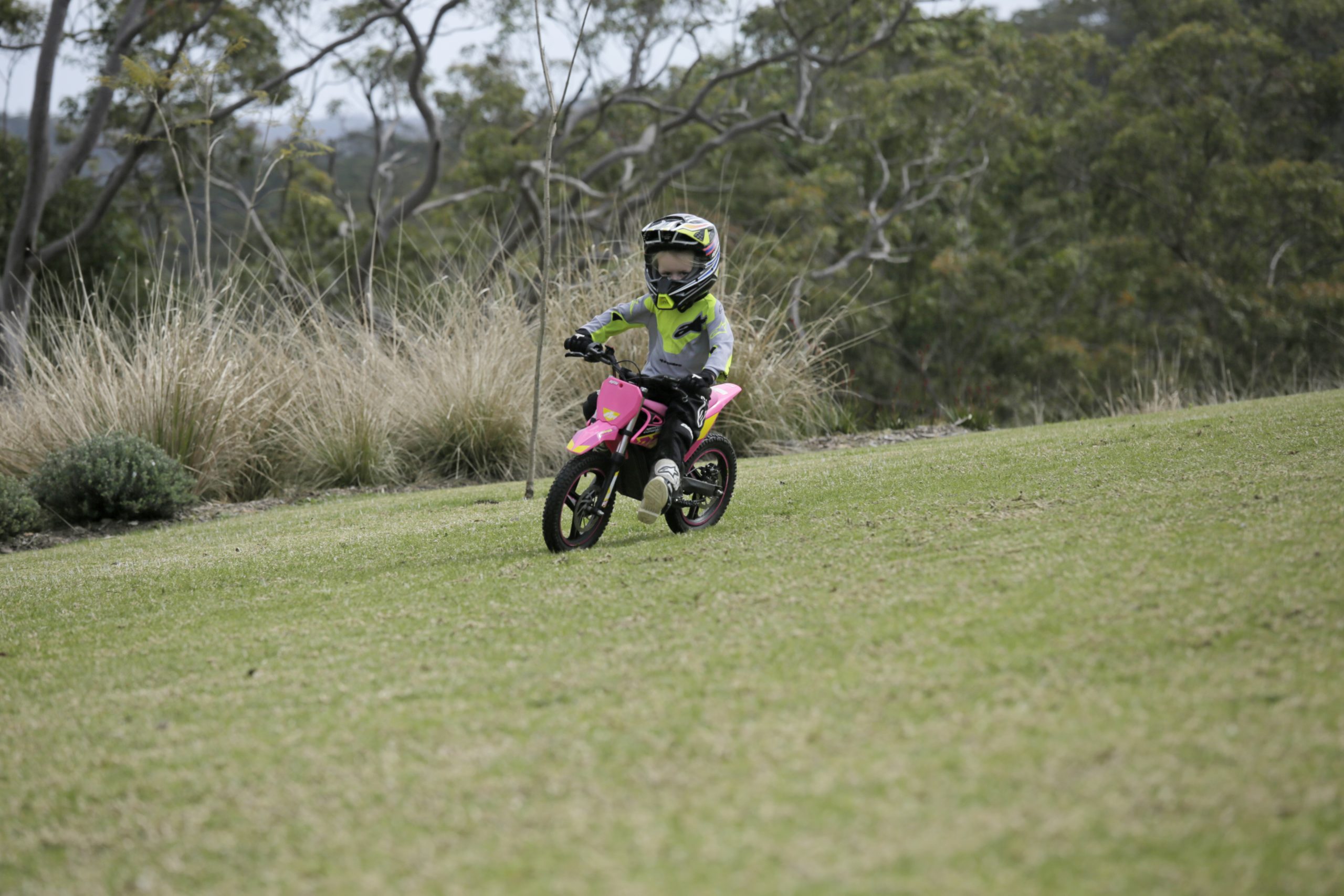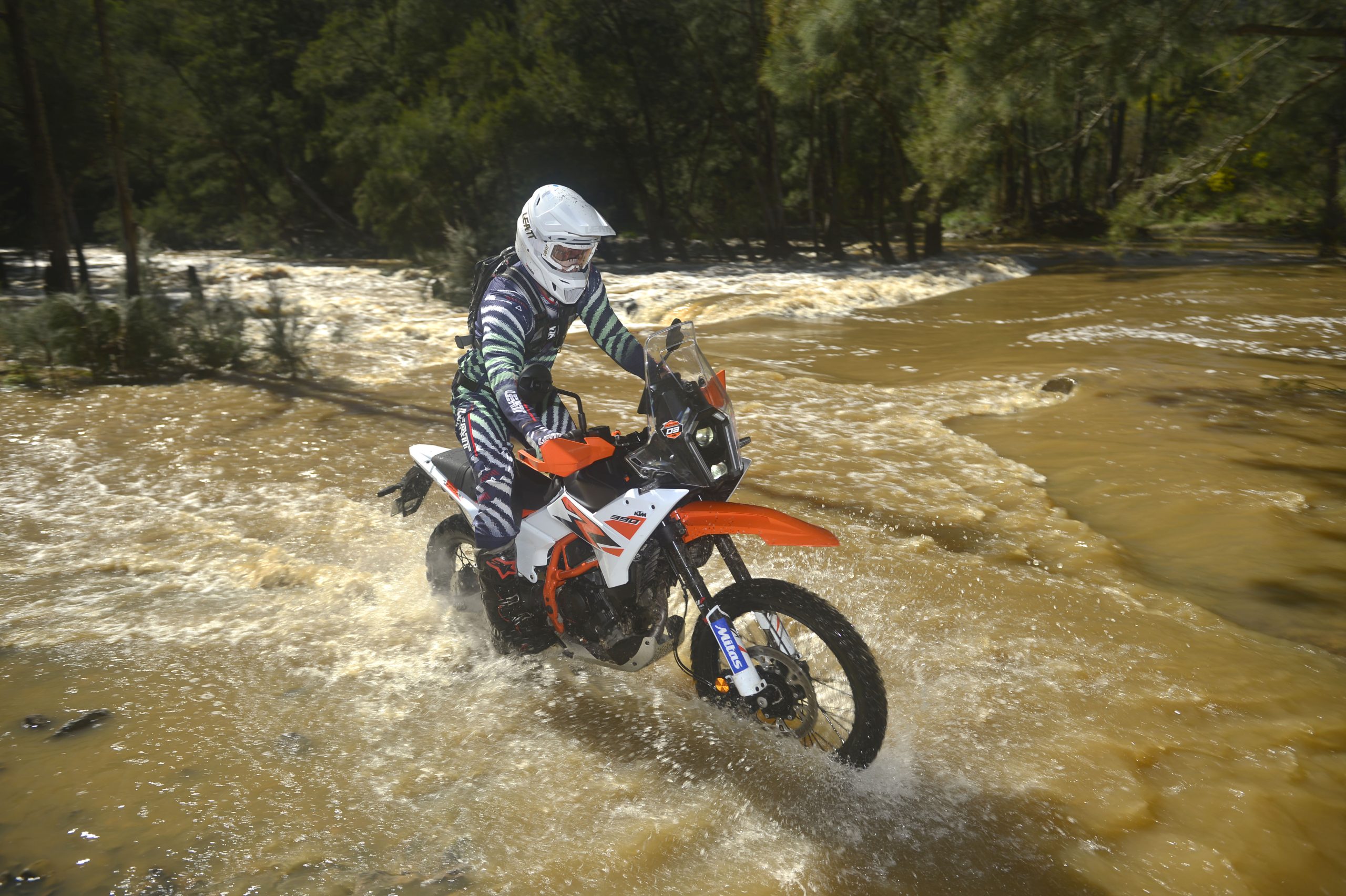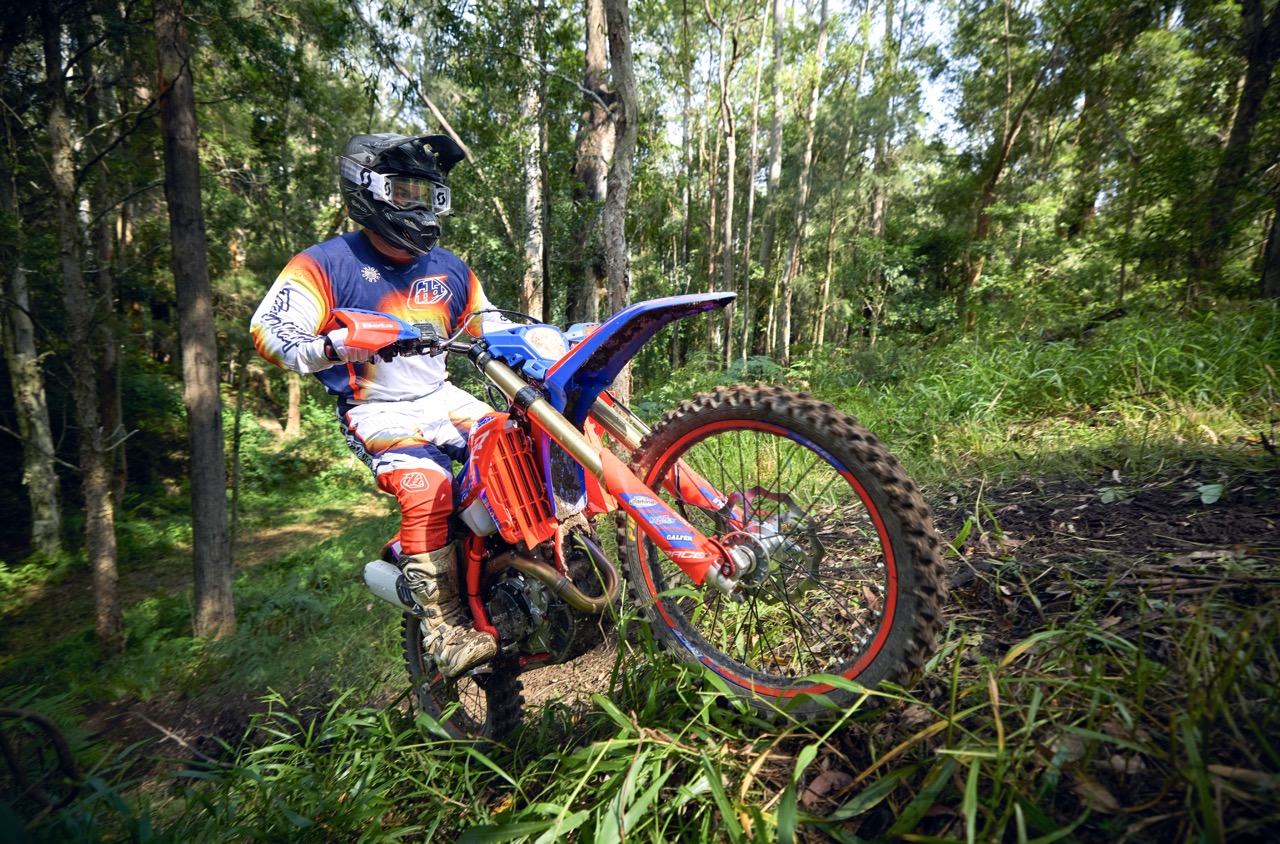Two stroke vs four stroke used to be a simple choice but technology has closed the performance gap, Grabbo explains it all.
I totally understand the confusion surrounding a 300cc mid capacity four stroke when comparing it to a two stroke. During my movements around the countryside I have attended enduro, desert, flat track and trail rides.
The whispers I hear regarding what two stroke capacity the 300F is closest too varies from event to event. At enduro events the 300F is seen on par with a 300cc two stroke, desert racers also see the 300F and 300 two stroke as similar opponents. Flattrack racers see the 300F more like a 250cc two stroke and trail riders generally have a different opinion depending on their body physique.
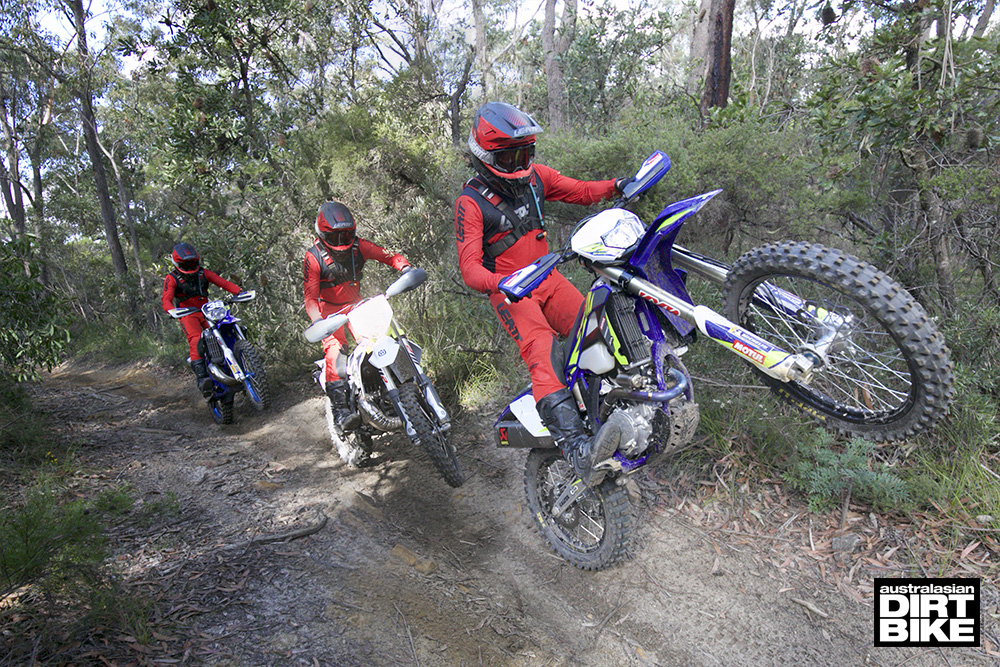
I totally understand the mixed opinions and confusion that stems from this, take a rider like myself, born in the 80s. Back then a 300cc four stroke was no match for any 300cc two stroke, let alone keep a 250cc two stroke in its sights. It was a fun trail bike or something that the local farmer used to muster his sheep. It basically came down to a massive peak horsepower difference as the average 300 four stroke was pumping out a measly 26 horsepower, compared to the 250 two strokes 45hp.
In the 90s not much changed, there were a few highly modified 300 four strokes getting around that made around 38hp with a tail wind. With a lightning fast rider it could potentially hang with a 250cc two stroke on a tight track, but other than that, the 300 thumper still didn’t have much for any 250 or 300 two stroke.
In the 2000s small bore four strokes took a huge step forward with the introduction of Yamaha’s high revving, high performance production 250F engine. Even it was no match for a 250 two stroke on fast open terrain as it was still a good ten horsepower down on the more powerful two stroke engine. By the end of 2011 European brands Sherco and Husqvarna both had small mid capacity four strokes available to the public, Sherco with the 300SEF and Husqvarna with their TE310.

Both bikes reputations grew fast as they won World Championships or one off world class events against the normally dominant 250-300 two stroke machines. So now the 300F that had generally been looked at as once very underpowered compared to either a 250 or 300 two stroke was now a world beater and ready to take on any capacity opponent.
Fast forward to now. I got the chance to ride Sherco’s 300SEF Factory on the same day as a Beta RR300 and Sherco 250SER. These are my thoughts on where a 300F fits when comparing it to a 250 or 300 two stroke. Before I ever threw a leg over any of the three bikes I knew there was no clear answer regarding the fairest opponent for the 300SEF as they are all separated by tiny numbers on the specification sheet.
After riding all three bikes the first and most noticeable difference is understandably the engine power delivery. I found the 300SEF more like the 250SER two stroke, than I did the RR300 two stroke in the power department, for pretty much every riding scenario. I could use very similar throttle action and amounts with both and get a similar feel and response from the engines. I had to be a lot more precise with the RR300, otherwise it would break traction or build too much speed in a hurry.
Riding aggressively it took a bit more effort to keep the 300SEF and 250SER singing, as they required more gear changes and clutch action than the RR300 does. Basically I felt like I could ride the 300SEF and 250SER engines the same way and get a similar result and feel from both.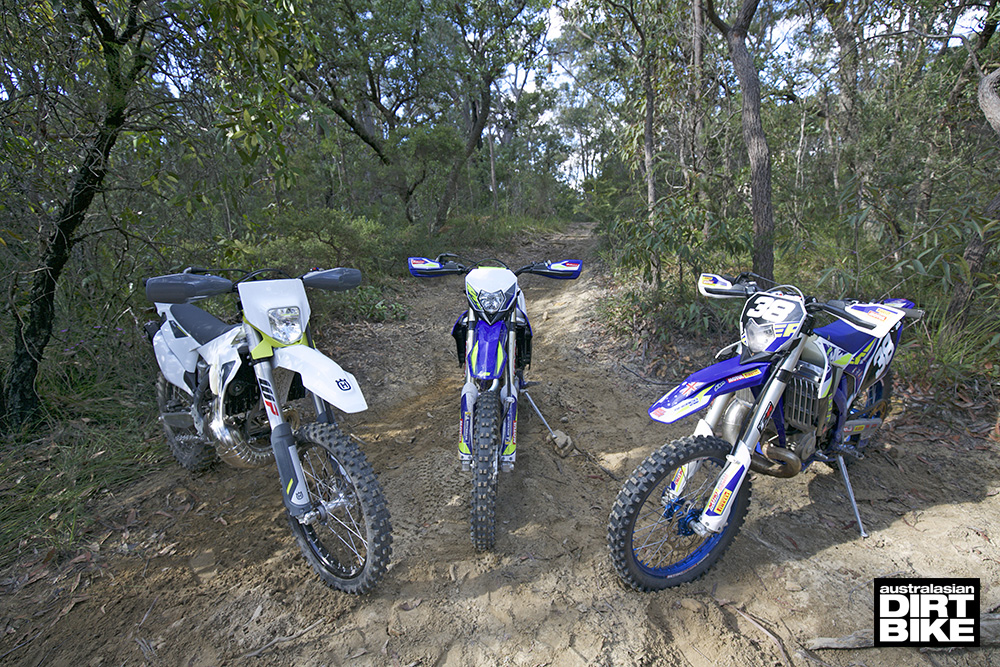 In the handling department I found the 300SEF more of a blend of both the two strokes. Weaving between tight twisty trees and corners the 300SEF responded well and felt more like the agile 250SER with its light feel and the way you could stop either bike in a heartbeat. Then out on fast, rough, choppy tracks the 300SEF gave a lot more of a planted or settled feeling, similar to what the RR300 does.
In the handling department I found the 300SEF more of a blend of both the two strokes. Weaving between tight twisty trees and corners the 300SEF responded well and felt more like the agile 250SER with its light feel and the way you could stop either bike in a heartbeat. Then out on fast, rough, choppy tracks the 300SEF gave a lot more of a planted or settled feeling, similar to what the RR300 does.
I could physically hold on less tightly without feeling the bike was going to do anything but charge forward, while the 250SER felt flighty and loose over the faster terrain requiring a lot more energy to feel settled. The 300SEF is slightly easier to ride, because of the extra traction provided from the smooth EFI four stroke engine. I still believe if you took a rider who either likes or excels riding a 250cc two stroke, they will feel right at home on the 300SEF, as they both respond in a very similar manner when treated the same way.
For now I am happy to say the 300SEF and 250SER are worthy opponents and the RR300 should pick a thumper bigger in capacity to go head to head with. Either way I will be excited to look back in another ten years and see where technology has taken all three capacities.
